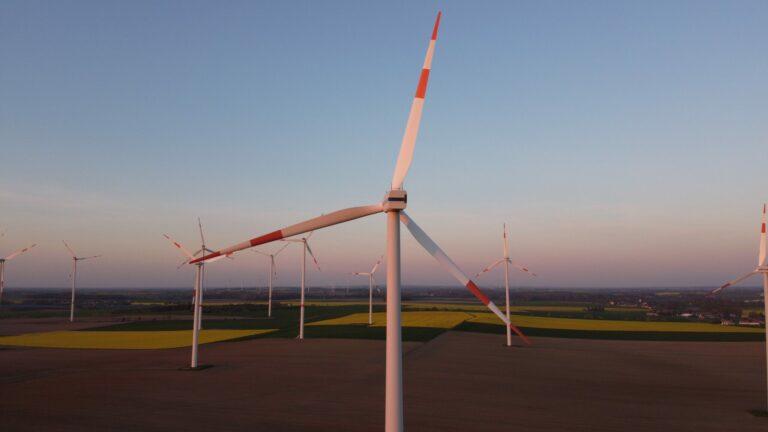The federal government has introduced a new version of the Spatial Planning Act (Raumordnungsgesetz, ROG) to speed up the planning and approval procedures for wind energy projects and promote the expansion of renewables. Although IKEM welcomes this legislative initiative, the planned changes raise concerns, in particular because their implementation may lead to new delays in the planning and approval procedures.
In December 2022, the federal government presented a legislative proposal to amend the Spatial Planning Act (Bt-Drs.: 20/4823), which was last modified on 30 January 2023 with draft text approved by the cabinet. The aim of the amendment is to accelerate the expansion of onshore and offshore wind turbines by simplifying planning and approval procedures and better linking the processes for spatial planning and urban land use planning.
New regulation of the regional planning procedure
The new version of Section 15 ROG represents one of farthest-reaching changes. The section introduces new terminology: a ‘spatial impact assessment’ is now carried out instead of a ‘spatial planning procedure’. With respect to the upstream level, only a ‘rough assessment of environmental concerns’ must be carried out. It is not clear from this wording, however, how much the depth of this assessment would need to deviate from that of the previous assessment in order to accelerate the process. The explanatory memorandum to the Act merely refers to the criteria outlined in Annex 3 of the Environmental Impact Assessment Act (UVPG), without establishing any further conditions. However, the intended purpose of simplifying and accelerating procedures is taken into account in at least two respects: the provisions include deadlines, which require the spatial impact assessment to be completed within six months, and the developer is released from any expenses related to delays in the assessment by the spatial planning authority.
Introduction of priority areas with exclusionary effect
In Section 7 (3) (3) ROG, the replacement of ‘suitable areas’ with ‘priority areas with exclusionary effect’ also raises questions. Certain uses can now only be excluded from a location in the planning area if ‘substantial space is made available’ for them in priority areas. This does not apply to wind energy areas, however; according to Section 27 (4) ROG, the priority identified under sections 245e and 249 BauGB applies to these areas. The purpose of this is to change the designation of wind energy areas to a positive planning approach in connection with the establishment of area targets and area contribution values required under the WindBG. The introduction of this restriction solves the previous problems associated with the planning of wind energy installations in suitable areas with exclusionary effect, in accordance with Section 35 (3) (3) BauGB. According to this, an exclusionary effect was only permissible in the presence of an ‘overall spatial planning concept’. The Federal Administrative Court has issued multiple rulings to concretise this feature, but due to the complex criteria, it could not provide a remedy for the associated legal uncertainty. Section 249 (1) BauGB therefore stipulates that Section 35 (3) (3) BauGB no longer applies to wind energy areas. Therefore, due to the conversion of planning in consideration of the WindBG, there is no longer a need for an overall spatial planning concept for the designation of wind energy areas.
The legislature’s intention to establish regulations as early as the planning phase is a welcome development, as this can establish legal certainty in the subsequent approval procedure. However, the blanket reference to the provisions of the Building Code is problematic, as the regulations cited may not be directly transferable to regional planning. This could give rise to uncertainty in the application of the regulations, delaying rather than accelerating the procedures. One positive aspect is that the changes suggest a deliberate alignment between regional planning and urban land use planning. However, the use of ‘substantial creation of space’ – a formulation taken from case law – deserves scrutiny due to the lack of a precise definition for these terms, which may lead to potential legal uncertainties in practice.
Omission of the environmental impact assessment in the Wind Energy Area Requirements Act
In connection with the amendments to the Spatial Planning Act, Section 6 of the WindBG was revision. The revision was initially subject to sharp criticism due to its incompatibility with the previous draft of the EU RED III Directive (COM (2021) 557 final). The reason for this was the draft’s stipulation that the ‘go-to areas’ in question are areas whose lack of ecological significance has already been determined. This determination is made on the basis of an assessment of environmental compatibility and species protection that is conducted as early as the land designation phase. So far, the German legislature has not provided for this in its draft, and it excluded from the approval procedure the environmental impact assessment and the species protection assessment pursuant to Section 44 BNatSchG. It is therefore an encouraging development that, in the draft text adopted by the Federal Cabinet adopted on 30 January 2023, the addition of sentence 2 to Section 6 (1) WindBG requires an environmental assessment pursuant to Section 8 ROG or Section 2 (4) BauGB to be carried out in the process of designating a wind energy area.
Conclusion
The revisions may promote the dovetailing of spatial planning and urban land use planning and pursue the goals of sustainable spatial development. Still, the complexity of the individual planning levels and the expectation of problems in the legally secure application are significant factors that may jeopardise the intended purpose of simplifying and accelerating the expansion of renewable energies.



